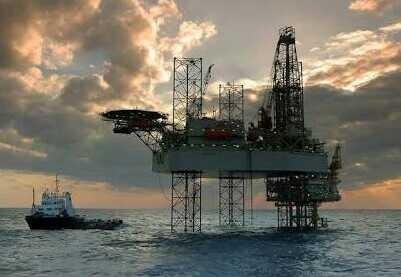
Crude oil is part of the petroleum whose existence is currently needed in various countries in the world. Where the process of forming this petroleum takes a very long time so that it is necessary for efforts to conserve the natural resources are thinning. This petroleum consists of a mixture of various hydrocarbons, most of which are alkane groups. Later petroleum or crude oil will be processed to produce various kinds of fuel for everyday needs such as kerosene, gasoline and can be used as chemical reagents in the manufacture of drugs. The processing of crude oil into ready-made materials will be explained further in the discussion below:
(1). Distillation Process
The first stage is distillation. Distillation is the process of separating the fractions present in petroleum, where the separation of the fraction is based on the difference in the boiling point. In this process is usually done on a high tube container that is impermeable to air. Initially crude oil will be flowed into the tube and then heated in a pressure of 1 atmosphere at 370 degrees Celsius.
Then the result of the fractions will be separated, where the fraction with the lowest boiling point will occupy the top of the tube, while the fraction having high boiling point will occupy the bottom of the tube. The results of this distillation process include gas, gasoline, kerosene, diesel, oil, wax and asphalt. Where all these results have not become ready-made materials because they have not passed the next stages.
(2). Cracking process
The second stage is cracking. Cracking is a petroleum processing process that aims to decompose large molecules of hydrocarbon compounds into smaller hydrocarbon molecules. This cracking process is often referred to as a refinery process. In general, this cracking process can be done in 3 ways, namely.
Thermal Cracking - Thermal cracking is a chain-breaking process of hydrocarbon compounds that have long chains into hydrocarbon compounds with smaller chains through a catalyst / heating process. The temperature that can be used is 800 degrees Celsius and in the pressure of 700 kpa. The purpose of this process is to obtain the fraction of petroleum by way of a lower boiling range of the feed.
Catalytic Cracking - Catalytic cracking is a cracking process that uses high temperature with low pressure. This process uses a catalyst as a medium to accelerate the rate of fractional reactions. In general, the reaction of this catalyst cracking process utilizes a carbonium ion cracking mechanism, which initially acidic catalysts will add protons into olevin molecules or attract hydride ions from alkane compounds so that this results in the formation of carbonium ions.
Hydrocracking - Hydrocracking is a combination of thermal cracking and catalytic cracking processes that produce saturated compounds. This hydrocracking process is carried out under high pressure, some of the results of this hydrocracking process include gasoline and jet fuel. The advantage of this process is to have a sulfur content contained in the fraction, where the sulfur will be converted into hydrogen sulfide compound so that sulfur release process will become easier.
(3). Reforming Process
After going through the cracking process then the next is the process of reforming. The process of reforming is the process of altering the structure of poorly fractional molecules into better quality fraction molecules. In the process of reforming this can be done by using a catalyst or heating process. Because this reforming process aims to alter the structure of fraction molecules, the reforming process can also be called the isomerization process.
(4). Polymeration and Alkylation Process
The subsequent process after the fractional molecular structure changes is the polymerization and alkylation process. Alkylation process is the process of adding the number of atoms in a fraction so that the molecule of a fraction becomes longer and branched. In the alkylation process it uses a strong acid catalyst additive such as H2SO4, HCL or AlCl3 (Lewis acid).
While the polymeration process is the process of merging between small molecules into larger molecules in a fraction so that the quality of the final product becomes increased. Thus at this stage the fraction molecule passes through the alkylation step first and then through the polymeration step to form a long fraction molecule in which the fractional molecule has improved.